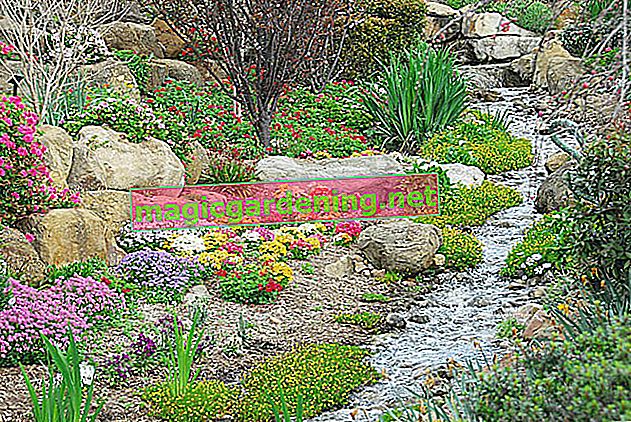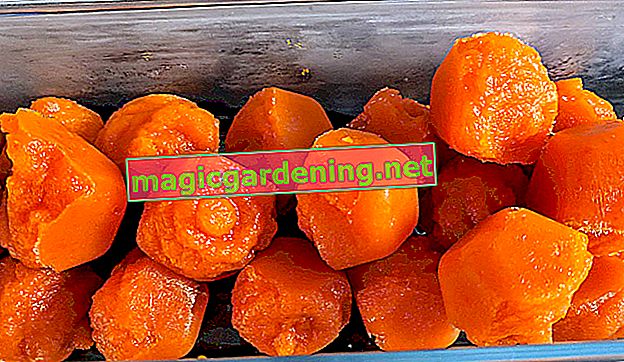
Remove and prevent mold from potting soil
Mold on the potting soil is not just bad for the plant. People who are prone to allergies can get sick from the buzzing spores. So don't smell the potting soil, rely on your eyes. Mold has a downy structure and spreads flat. White limescale deposits, which can also occur, are crumbly and dry.
If there is a strong mold infestation, diseases such as
- Skin irritation
- Respiratory disease
- Difficulty concentrating
- Throat irritation
- Asthma attacks
- increased susceptibility to infections
also read
- Mold on raspberries - causes and preventive measures
- What to do if brown mushrooms grow in the flower pot
- What to do if there is mold on the palm?
Pets can also get sick from mold spores.
If mold forms on the potting soil, action should be taken immediately. You have to assume that the entire soil in the pot is already riddled with mold spores. Simply scraping off the infected surface is not enough in any case.
First aid for moldy potting soil
If you discover the tell-tale white coatings on your potting soil, act immediately. Bring the infected plant outside. If you are prone to allergies, wear gloves and a breathing mask when working to avoid inhaling spores.
- Repot your plants
- Use fresh soil
- Thoroughly remove old soil from your plant, wash off the roots
- Clean the flower pot with hot water, soapy water, or vinegar water
Open-pored pots made of clay or terracotta should be disposed of, as the spores tend to nestle deep in the porous material.
- Check all other plants for possible infestation
Prevent mold growth
If you have repotted your plant in fresh soil, you should definitely prevent a new mold infestation. Provide loose potting soil and make sure that no waterlogging occurs. If the soil is too moist, moderate watering and drainage made of gravel or expanded clay help. (€ 17.50 at Amazon *)
Make sure that the plants get a lot of light, mold loves darkness!
If you like the smell, you can mix a few drops of tea tree oil under the surface of the soil. The oil does not harm the plants, but it does help against mold.
If a certain plant is repeatedly noticed by mold, it must be disposed of. The mold will continue to spread and affect other plants as well. Dispose of the plant and the soil in the residual waste. The mold spores will continue to develop and spread on the compost.
Use of fungicides
Fungicides are chemical agents that kill mold. They are given to the earth, but also get into the plant.
This “chemical club” should in any case be the very last means of control, because with the chemical you often bring even more dangerous pollutants into your garden or apartment. If used in the home, the product must be officially approved for living spaces.








